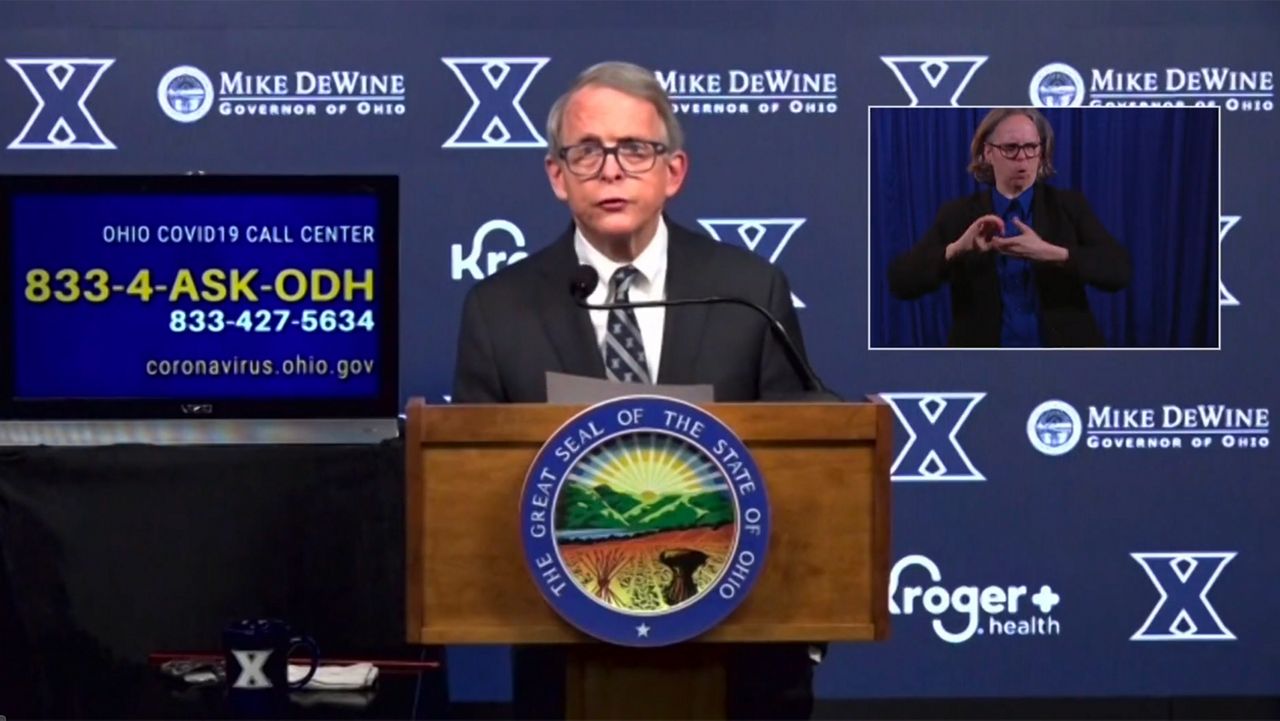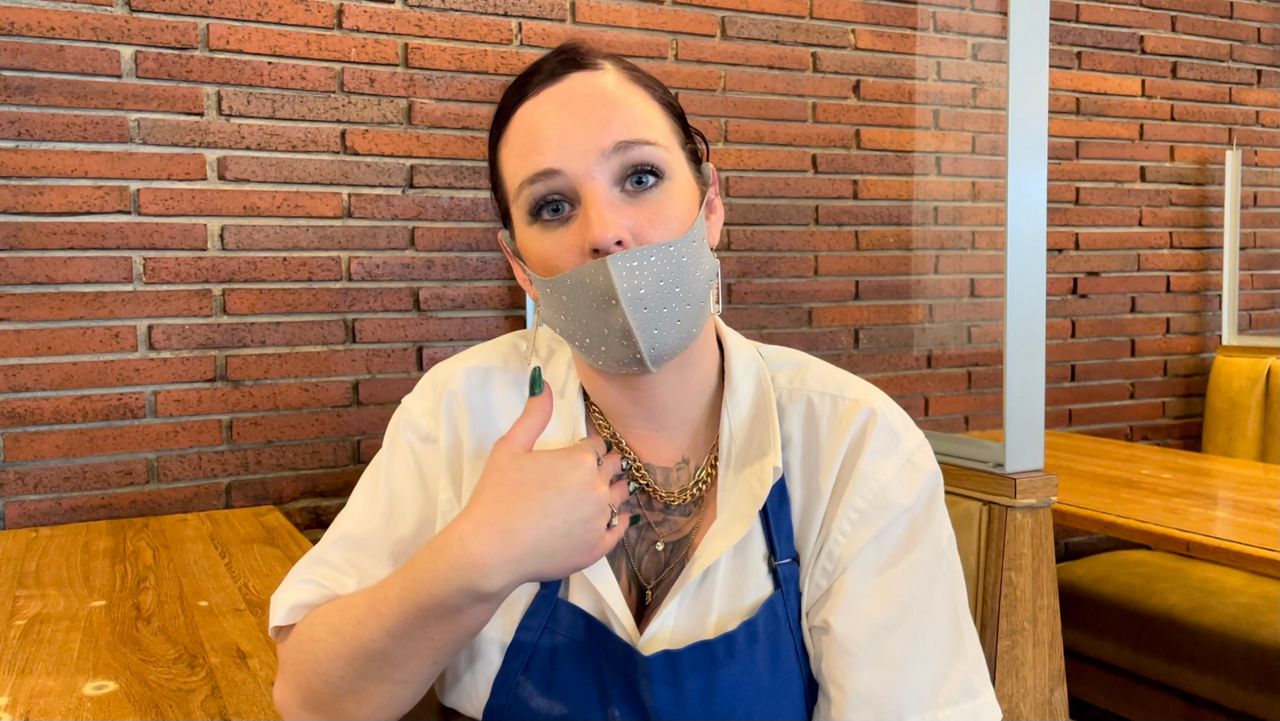COLUMBUS, Ohio — Gov. Mike DeWine predicts it won’t be any trouble to get an appointment 2-3 weeks after the state drops all requirements to get the vaccine on March 29, but essential workers that are not being made eligible before the general public said they feel left out.
Erica Bishop, 30, of Columbus, said she thought restaurant workers would be made a priority, and said it is disappointing that vulnerable workers in her industry were lumped in with the general public. Bishop is a server at the home-style cooking restaurant Tee Jaye’s Country Place.
“Myself, personally, I don't want to get the shot. But I do believe that the older people that are essential workers, they should get the shot, and they should be part of it, because we do work just as hard as anybody else,” she said.
It would be too difficult to determine who is an essential worker, the governor said. In his view, he said the best way to save lives is vaccinating primarily in order of age group.
With Tuesday’s announcement, Ohio will make everyone eligible for the vaccine, it became clear the state will not be prioritizing essential workers, who the Centers for Disease Control and Prevention (CDC) said should get early access to vaccinations.
In 11 days, essential workers will be eligible for vaccination, but so will millions of other residents who are all joining the pool at once on March 29.
The state said, based on recent conversations with federal officials, it is dropping vaccine requirements on the date, as it expects a more than 100,000-dose increase in weekly vaccine supply then.
In his news conference Thursday, DeWine predicted the struggles to register for vaccine appointments will soon be a thing of the past. Every time the state has expanded eligibility so far, it has taken about two weeks for appointments to become more available, he said. The governor acknowledged, however, that in urban areas where vaccine uptake is high, it is taking longer.

“What providers tell us is every time we open it up, there's a big swell for a couple weeks and then, on the third week, it starts dropping off,” he said. “When you get into that third week, I think, you're going to see it start to open up.”
The CDC Advisory Committee on Immunization Practices recommended that food and agricultural workers, U.S. Postal Service workers, manufacturing workers, grocery store workers, and public transit workers get vaccinations in Phase 1B. In Ohio, those groups won’t be made eligible any earlier than the general public.
Ohio has offered vaccines to law enforcement and corrections officers on the basis they are essential and vulnerable due to the nature of their work. The state decided to vaccinate teachers and school staff because getting students back in school was a top priority for the DeWine administration.
The governor said masks do a good job protecting frontline workers: “Generally we do not see much spread in business,” he said. The governor also argues there is no good way to define who is essential.
“We made the decision that it's very difficult to determine who is an essential worker,” he said Wednesday at a vaccination site in Chillicothe.
Dozens of U.S. states have expanded vaccine eligibility to essential workers, despite the challenge the governor mentioned of drawing the lines for who is and isn’t essential.
Cincinnati Mayor John Cranley has been among the most vocal politicians demanding the governor include essential workers for vaccination. In an early March letter, Cranley objected to the governor's age-based approach, and called for the state to include 911 operators, grocery-store employees and restaurant workers.
“These employees have been on the front lines of the pandemic, providing a vital service to our community at a time when many had the ability to work from the safety of their homes,” Cranley said. “Grocery employees and restaurant workers can be exposed to hundreds of people a day. All of these people are providing vital services and they should be vaccinated as quickly as possible.”
On Tuesday, Ohio reported administering 65,000 first-dose shots and 67,000 on Wednesday, among the state’s highest days. The governor said the state is receiving about 400-500,000 doses each week.
But there is one concern for staying on track with projections to expand vaccinations to everyone in April: Johnson & Johnson has not been coming into Ohio at a significant level. After a 96,100-dose shipment the first week of March, nothing came in the following week. Then, “the week after that, we just got a little bit,” DeWine said Wednesday.
Asked if the state was on track to open mass vaccination clinics on schedule the week of March 29, DeWine said J&J shipments will determine that.
“It really depends on whether we get Johnson & Johnson in that week, or whether it is the next week when we start getting it in,” he said. “Our idea, at least at this point, is for some of the mass vax sites to have the Johnson & Johnson.”
The governor said there seems to be a real appetite for the single-shot vaccine, more than the state was expecting.
“It’s quite interesting. We didn't know whether people would want to take the Johnson & Johnson, or if they would have a preference, but there certainly is a market out there, and I'm sure some people just want to get one shot and be done with it,” he said.
Bishop said her colleagues, who are older and eligible for the vaccine, were having a hard time getting appointments, a problem that could have been solved if essential workers had been a priority group. She disagrees with the governor’s claim that there is low risk of spread in businesses.
“We have people that come in and they're coughing,” she said. “It does put us at high risk, and all of us, we have kids, and we have a household that we got to go home and take care of. So we have to make sure that we're safe, and sometimes, the people that come in, they're not as safe as we are.”



